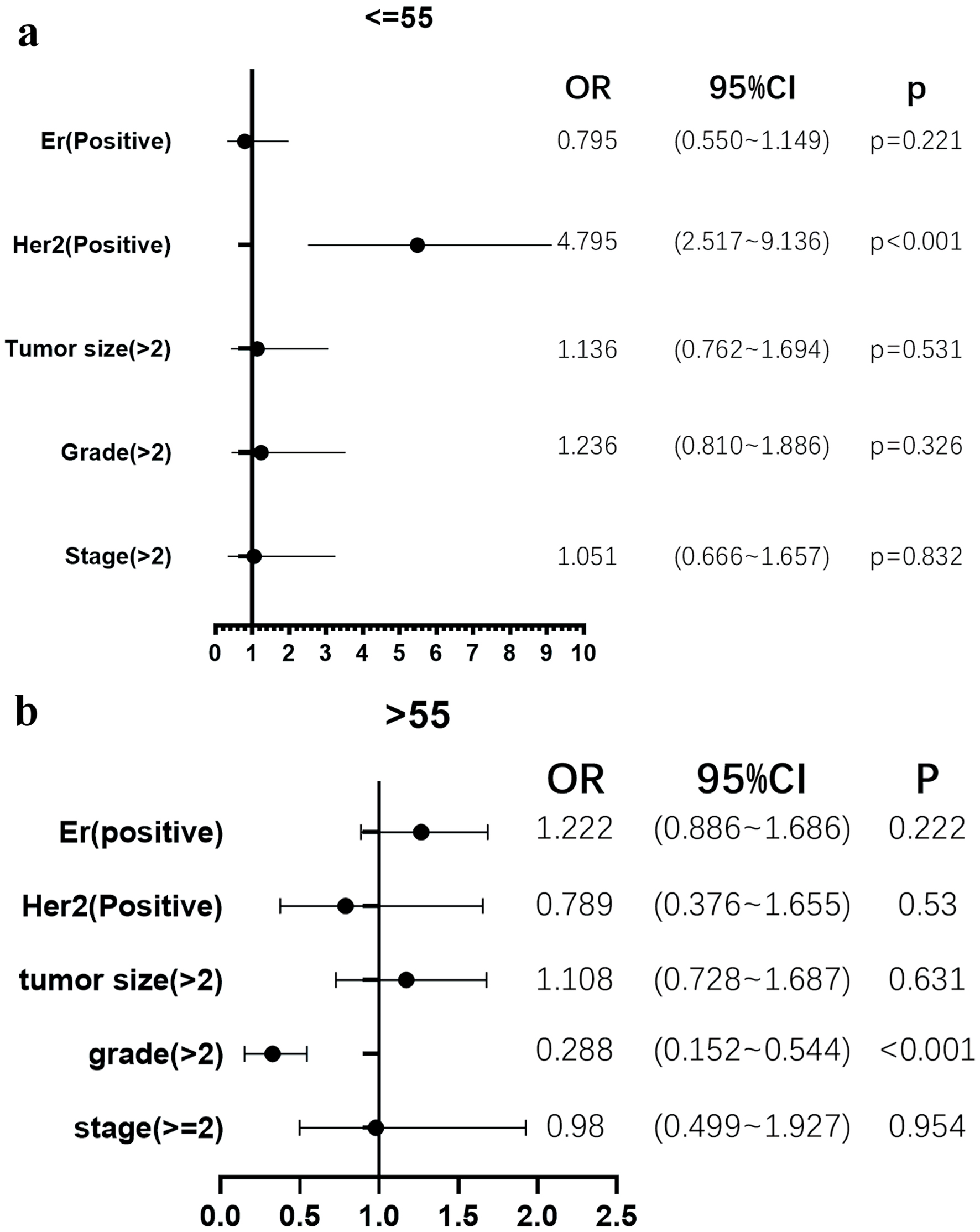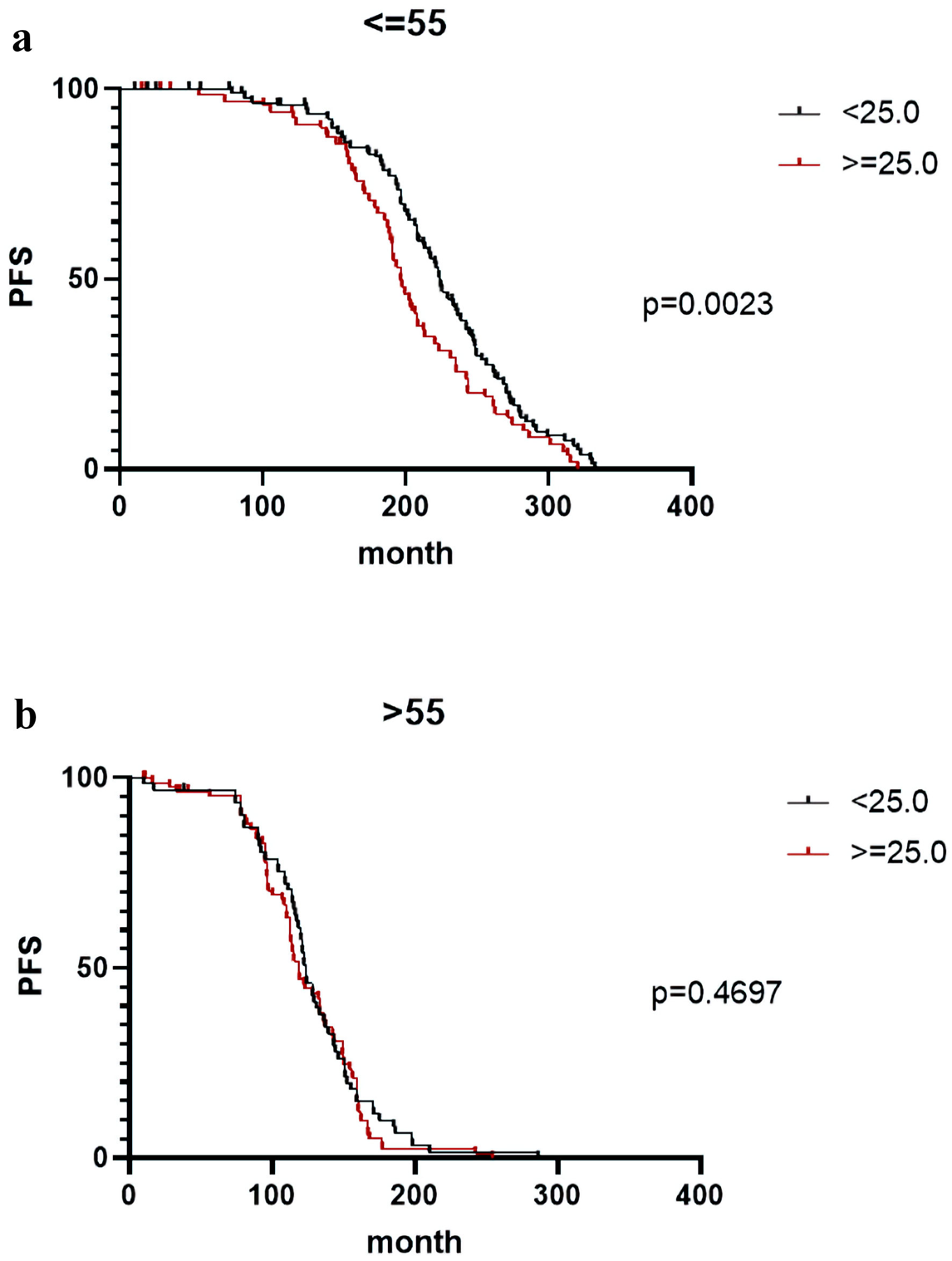
Figure 1. High body mass index (BMI) was associated with HER2 positivity in younger, but not in older patients, and was associated with lower histological grade in older, but not in younger patients. (a) The patient’s age group less than 55 years with high BMI are more likely to be HER2 positive (odds ratio (OR) = 4.795, 95% confidence interval (CI) = 2.517 - 9.136, P < 0.001) when compared to the breast cancer patients with normal weight. (b) Breast cancer patients older than 55 years were accompanied by high BMI, and they are more likely to have a tumor grade greater than 2 (OR = 0.288, 95% CI = 0.152 - 0.544, P < 0.001).
